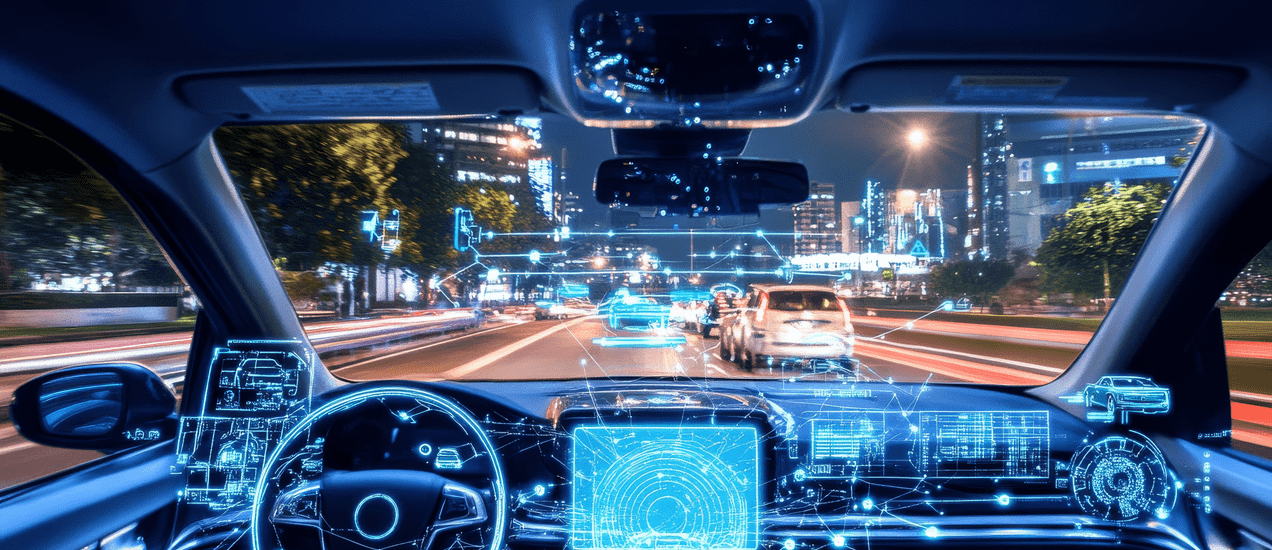
Nagarro
From accelerating EV adoption to advancing autonomous vehicles, from managing erratic demand cycles to navigating persistent supply chain volatility, automakers are fighting a multipronged battle.
Navigating these shifts, while balancing rapid technological change, sustainability mandates, and compliance pressures requires more than digitalization. It demands a fine balance between future-focused innovation and efficiency-driven pragmatism.
AI serves as a force multiplier in this disruptive environment, enabling automakers to not only innovate and build autonomous and intelligent vehicles, but also drive operational resilience and cost efficiency across the entire automotive value chain.
This blog underlines how AI can enable automotive players do more with less, uncovering optimization opportunities that were previously invisible.
| Challenges driving AI adoption in automotive |
| Ongoing global supply chain disruptions |
| Semiconductor shortages |
| Accelerated transitions to electric vehicles (EVs) |
| Demand volatility across markets |
| Increasing regulatory and sustainability requirements |
| Fragmented digital systems and siloed data |
AI use cases across the automotive value chain
AI significantly enhances forecasting accuracy across sales, production, warranty claims, and inventory. This precision minimizes overproduction, avoids stockouts, and reduces cost.
For example, manufacturers with large inventories of spare parts are leveraging machine learning to anticipate demand across months and regions, ensuring better financial predictability and lower resource waste.
"If I am an automotive company with a significant investment in spare parts, I want to understand how many of those will be needed next month, in six months, and next year," explains Anurag Sahay, who drives AI initiatives at Nagarro.
Forcastra AI simplifies this, using AI to analyze demand, inventory, and supplier data, generating crucial foresight.
"We believe that when you make better decisions, you can typically improve your outcomes by 30-40%," Sahay asserts, noting that humans remain central, augmented by AI insights.
BMW, too, is currently using AI to tailor inspection checklists for individual customer-specific vehicles. By analyzing model variant, equipment configuration, and real-time sensor data, the system automates the sequence of inspections via a mobile app - improving speed and accuracy.
Parallelly, many leading auto brands including BMW, Volkswagen, and Tesla are investing in AI-powered digital twins to build supply chain resilience.
Enhancing customer experience through personalization
With evolving consumer expectations, AI enables brands to offer hyper-personalized experiences, from tailored communication to intelligent product recommendations.
A leading automaker has partnered with Nagarro to improve its responsiveness to individual customer needs by using solutions like Genome AI, which uses knowledge graphs and customer data to generate granular insights. These insights help not only in marketing personalization but also in refining inventory planning and product rollout strategies.
Additionally, conversational AI is transforming digital engagement. AI-powered assistants like AutoMate, can learn from customer interactions to support vehicle discovery, answer queries in natural language, and assist sales teams with data-backed insights.
Smart mobility: As car sales slump across geographies and mobility continues to evolve, automakers can leverage AI to identify and tap new monetization opportunities.
In its transition towards autonomous vehicles, Hitachi Astemo (HA) is using an intelligent management platform to identify data intelligence by using in-vehicle sensors, CAN data, edge processors, and artificial intelligence.
The intelligent vehicular data platform captures and shares data intelligence with all connected vehicles to ensure better navigation, and safety. It can also be monetized by partners (Telematics service providers) in domains like weather, road navigation, and insurance.
HA estimates that the intelligence on potholes would help cut down road accidents by 10%, and the accident reconstruction use case enables partner insurance companies to settle insurance claims 15% faster by correctly assigning the liability.
Intelligent co-pilots are helping many automotive OEMs transform the driving experience with natural voice control and intelligent features to stay connected, entertained and in control while driving.
Generative and emerging AI: While traditional AI excels at prediction, pattern recognition, and automation, Generative AI adds the power of creation, from generating code and product descriptions to simulating design iterations.
Together, predictive AI and Gen AI create a complete intelligence stack where machines not only sense and interpret but also generate, assist, and reason.
Agentic AI-powered workplace assistants like NIA are helping streamline customer support by analyzing incoming tickets, prioritizing them, and suggesting resolution paths, reducing response times and improving service quality.
“AI powered assistants can enable an intuitive and uniquely personalized buying journey by uncovering deep behavioral insights from customer interaction data,” said Paramita Nath, Automotive expert at Nagarro.
These insights can be leveraged to deliver smarter recommendations, offer timely nudges, and curate a differentiated experience that guides buyers with precision and empathy - from first interest to final conversion.
As the technology evolves, we are moving from reactive support tools to co-pilots that actively assist humans in complex tasks (marketing, engineering, decision-making), and toward autonomous systems capable of executing full workflows with reasoning and adaptability.
Looking ahead, automotive AI is entering new frontiers.
Advanced systems like GPT-4o and Gemini 2.5 can simultaneously process text, voice commands, visual inputs from cameras, and in-cabin audio - enabling more intuitive driver interactions, real-time diagnostics, and contextual in-vehicle assistance.
For automakers, this paves the way for natural voice-controlled copilots, gesture-aware infotainment, and AI systems that can "see, hear, and understand" the driving environment in real time.
While the industry is excited about autonomous agents, the consensus is that, in most cases, well-designed intelligent workflows can deliver faster and more reliable results. On Agentic AI, Sahay offers a pragmatic perspective. While agents represent the "ultimate achievement," he believes "90 percent of the time, a smart workflow suffices."
Building overly complex agentic systems from the outset can be counterproductive. "Designing for success encourages momentum," he argues, favouring intelligent workflows where possible, while reserving true agentic designs for genuinely open-ended problems.
Though still nascent, the vision of AI-driven robotics (à la Tesla’s Optimus) is being quietly shaped by today’s advances in factory automation, predictive maintenance, and smart systems - foundations Nagarro is already helping OEMs build.
"Whenever we work with automotive systems, we are essentially contributing to systems that will eventually lead us there," Sahay suggests, pointing to Nagarro's work in manufacturing and industrial automation as foundational steps on that journey.
The foundation for scalable AI
Despite its promise, scaling AI in automotive is not frictionless. Data privacy regulations (e.g., GDPR, CCPA), fragmented data architectures, workforce skill gaps, and model drift all pose barriers.
However, disciplined operationalization - robust cloud data pipelines, ethical-by-design principles, and upskilling programs - can significantly de-risk these investments.
Nagarro's approach rests on four pillars: building robust cloud infrastructure (partnering with AWS, Azure, Google), engineering high-quality, accessible data pipelines to break down silos, applying data science for sharp insights, and finally, deploying sophisticated AI models.
"Without data, you can’t build good analytics; without analytics, you cannot build good AI," Sahay emphasizes.
AI in automotive is no longer an experimental playground - it’s a strategic lever. From supply chain resilience to personalized experiences, from intelligent manufacturing to predictive service, AI is helping automakers navigate disruption with intelligence, speed, and intent.
To lead in the next era of mobility, automakers must go beyond adopting AI - they must operationalize it with discipline, creativity, and foresight.



